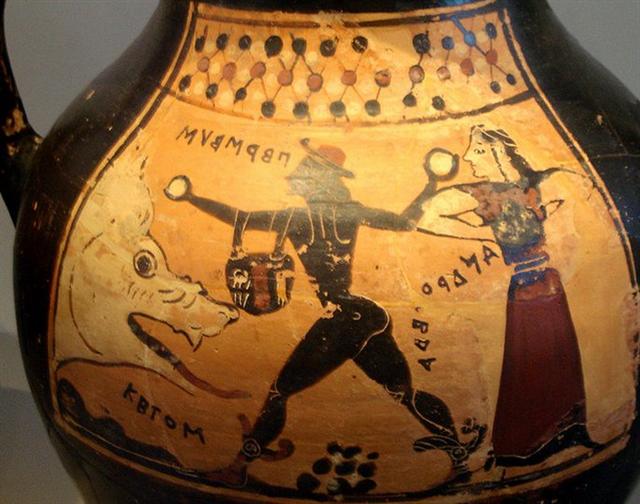We need the myths of Easter Island in order to make the rongorongo texts 'come alive'. When I happened to find the picture of the old Greek vase with Sea-beast, Perseus, and Andromeda, painted together below a 'net' with a pair of holes, I suddenly began to understand the strange activities of the explorers at Pu Pakakina.
The peculiar letters on the vase could be due to an early variant of the Greek alphabet or - more likely - created because the painter used some of his letters as Signs: "Ancient Corinthian vase depicting Perseus, Andromeda and Ketos. The inscriptions denoting the depicted persons are written in an archaic form of the Greek alphabet and show some peculiarities such as the left-running direction in ΠΕΡΣΕΥΣ and ΑΝΔΡΟΜΕΔΑ, usage of Epsilon instead of Eta in ΚΕΤΟΣ, the employment of the letter San instead of Sigma in ΠΕΡΣΕΥΣ and ΚΕΤΟΣ and different shapes of the letters such as B for Ε or V for Υ." (Wikipedia) The painter did not write M in Andromeda, but left a vacant space, thereby writing her name with 3 + 5 = 8 letters, counting upwards and to the right. Moon moves withershins with the precession, rising in the west earlier and earlier for each day. To use ε instead of η in Ketos (Whale) could mean the 3 dark nights 'inside' was in the past and that now a new cycle was due to begin - which agrees with the gesture of Perseus lifting his arms:
| |||||||||||||||||


